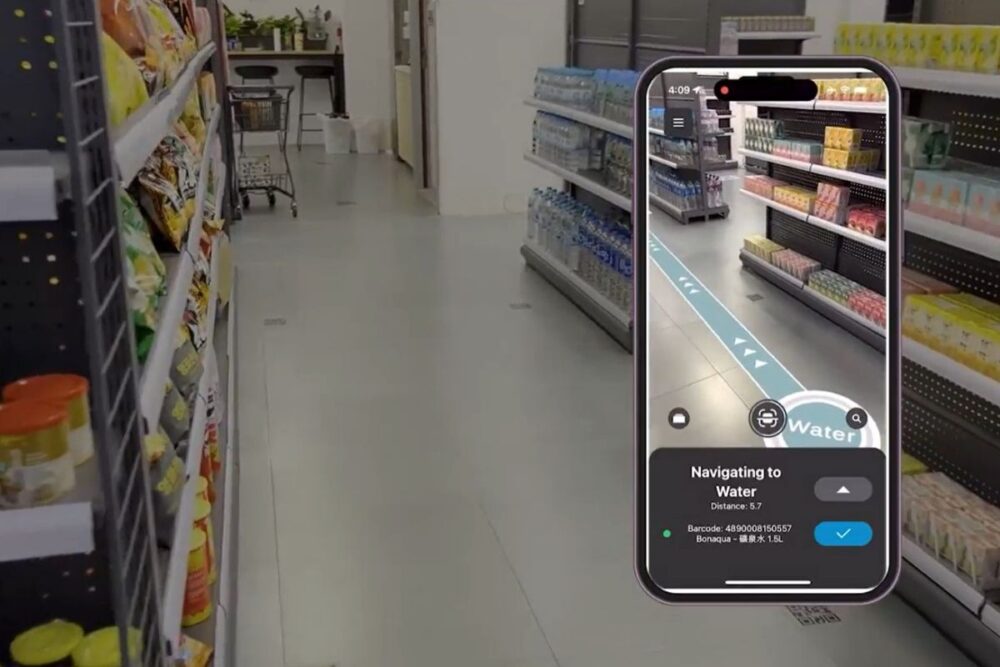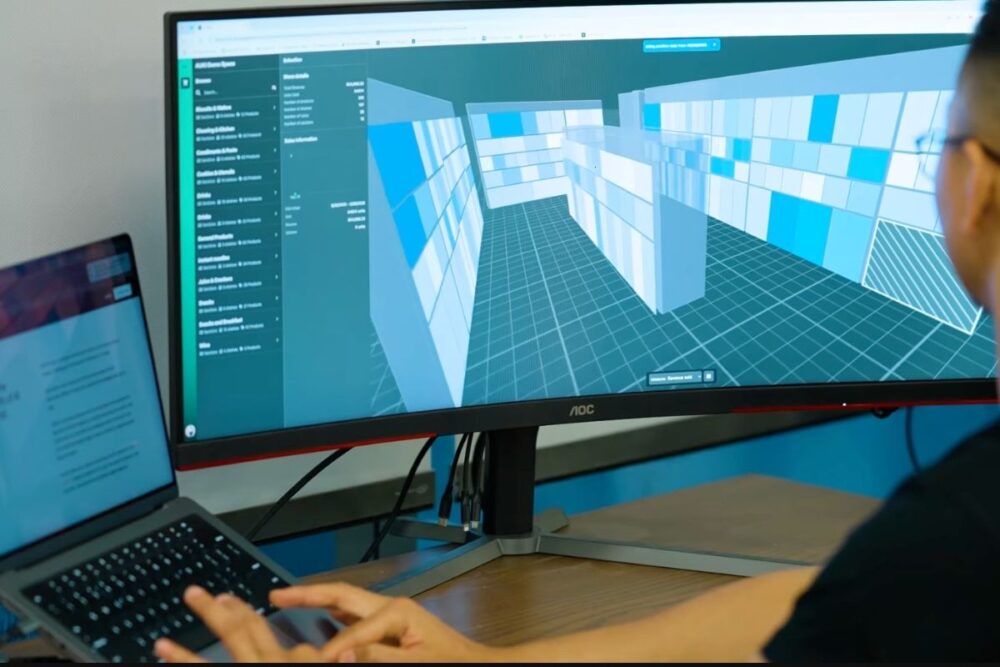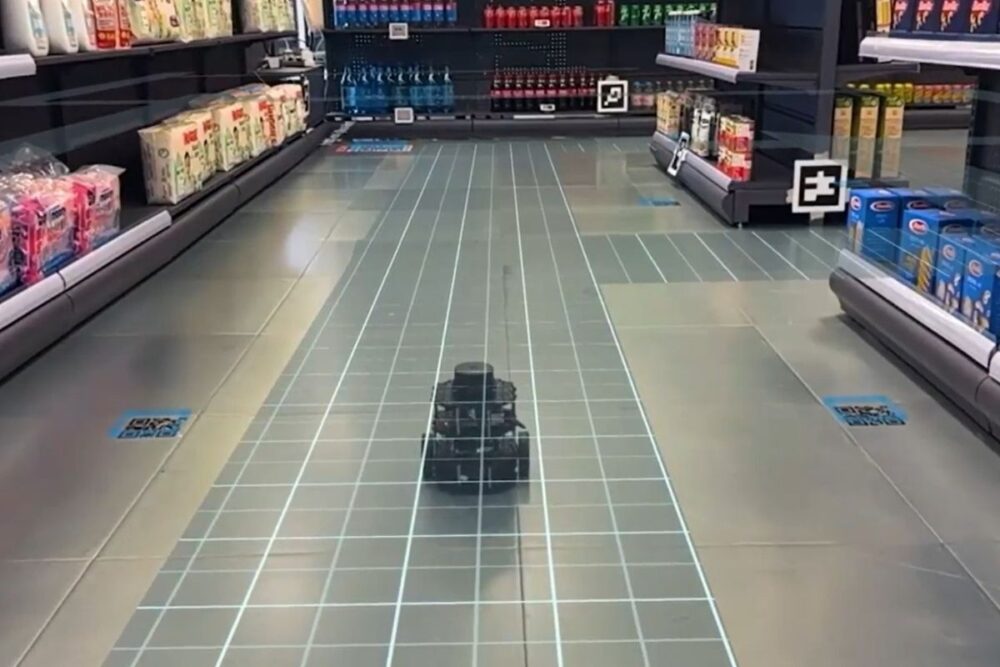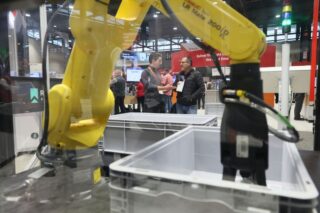If many industrial sectors have embraced digital transformation, physical retail and logistics have largely remained analog. But Auki Labs, a Hong Kong-based startup, is changing that by bringing true spatial intelligence to the real world. In an exclusive interview with Johannes Davidsson, Head of Business Development at Auki Labs, DirectIndustry uncovers how the company is revolutionizing retail and warehousing with its groundbreaking AR-based spatial computing protocol.
The Problem: Physical Blindness in the Age of AI
“AI today understands screen space—but not physical space,” says Davidsson.
Indeed, while artificial intelligence and automation are transforming digital workflows and customer service, over 70% of the global workforce still operates in the physical realm. From store shelves to warehouse aisles, these environments remain opaque to machines—and often, to the humans managing them.
Retailers have long relied on planograms, essentially idealized diagrams of store layouts. But planograms often fail to reflect reality.
“They’re just aspirations,” Davidsson remarks. “What retailers need is an accurate, live understanding of where products and price tags are actually located. Auki Labs provides that through a lightweight, scalable solution.”
The Solution: A Spatial Computing Protocol for the Real World
Auki Labs has developed a protocol that allows devices—from smartphones to robots—to collaborate in understanding and reasoning about physical space. It uses affordable visual markers (stickers costing mere cents) placed around a retail environment, allowing AR-enabled devices to map and localize themselves in the space with high precision.
The system is lightweight, privacy-conscious, and easy to implement. No need for expensive infrastructure: basic Wi-Fi and a few strategically placed markers are sufficient.
“We did a 2,500 square meter store for $20,” Davidsson notes. “Mapping takes as little as five hours, and no electricians, network engineers, or complex installations are required.”

Transforming Retail Operations and Customer Experience
For retailers, the implications are massive. Staff can locate products instantly, automate tasks like restocking, and interact with store layout data in real time.
“It saves about 30 minutes a day per associate,” says Davidsson—time they can now spend on customer service instead of logistical guessing games.
Shoppers benefit too. By scanning a QR code, they can activate a customized AR experience that guides them directly to desired items—no more aimless aisle wandering. For example, searching “capers” on your phone yields not only product information but a real-time path to its exact shelf location.
Bridging E-Commerce and Brick-and-Mortar
“What we can do in e-commerce, we can now do in a physical store,” says Davidsson.
Auki Labs enables physical spaces to behave like digital platforms—interactive, responsive, and data-rich. Stores become canvases onto which digital tools can be layered: from shopping assistants to task automation systems, all operating with precise spatial awareness.
Retailers can also customize the system via white labeling, aligning it with their branding and integrating it with existing platforms. Importantly, the data stays local. Auki Labs licenses its software, which clients self-host—critical for large retailers wary of data-sharing with big cloud providers like Amazon or Google.

Beyond Retail: Applications in Warehousing and Logistics
Though Auki Labs is currently focused on retail, the technology is market-agnostic. Warehouses, for instance, can integrate Auki’s system to enhance traditional warehouse management systems.
“We translate shelf locations into spatial coordinates—X, Y, Z—so a robot or AR-equipped worker can navigate directly there,” Davidsson explains.
The system’s interoperability means it can enhance existing logistics tools without replacing them. It simply adds spatial understanding—something the digital layer has long lacked in the physical world.
Global Rollout and Future Vision
Auki Labs is already scaling. With pilot programs and active deployments in over 1,000 stores across Northern Europe, and ongoing projects worldwide, the technology is gaining traction fast.
As the first mover in this domain, Auki Labs is paving the way for a new class of spatially intelligent environments. By transforming smartphones into robots without legs—devices capable of navigating, reasoning, and interacting with real-world layouts—they’re turning physical stores and warehouses into smart, connected, and efficient spaces.







![Image [Buying Guide] How to Choose the Right AMR?](/wp-content/uploads/sites/3/AMR-320x213.jpg)



